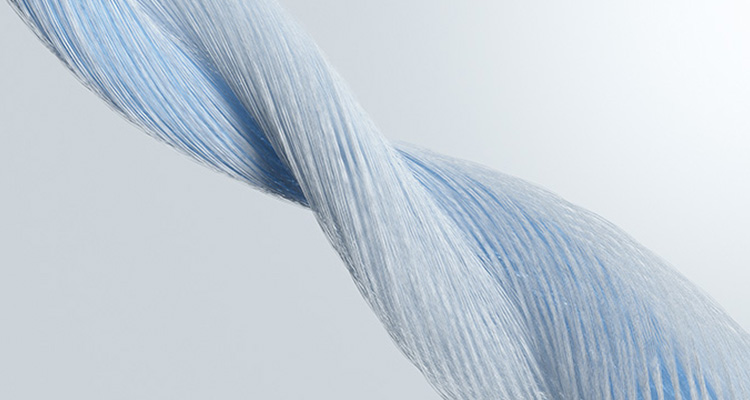Classification by source of polymers
Regenerated fiber
Made from natural polymers, including two major categories: regenerated cellulose fibers and regenerated protein fibers, such as viscose fibers, copper ammonia fibers, and acetate fibers (regenerated cellulose fibers): soybean protein fibers and milk protein fibers
Synthetic fibre
Made from low molecular weight compounds (monomers) made from coal, petroleum, natural gas, agricultural by-products, etc., such as polyester, acrylic, nylon, polyvinyl chloride, polypropylene, etc
Classification by fiber longitudinal structure and morphology
Monofilament
Refers to a single fiber with a very long length. Conventional monofilaments with diameters ranging from 0.05 to 2mm and finer than 0.15mm are called fine monofilaments; Fine fibers finer than 0.1mm are called ultrafine monofilaments. Fine monofilament is used for weaving fabrics such as socks and scarves; Coarse monofilament is widely used for making brushes, filters, fishing nets, racket nets, strings, stitching, etc; Ultrafine monofilament is used for medical sutures, fashion and decorative fabrics, etc
Staple fiber
Divided into three categories
Name
Cutting length (mm)
Linear density (dtex)
Cotton type fibre
38~50
1.3~2.2
Medium length fiber
50~65
2.2~3.3
Wool fiber
65~205
3.3~44.4
Multifilament
Refers to a continuous filament composed of multiple monofilaments. Commonly used multifilament is between 20-300 dtex. Cotton spinning commonly uses multifilament as the core wire for core-spun yarn
Low twist silk
Low twist yarn refers to composite yarn with a twist of less than 30 twists/m. Low twist silk has poor adhesion, and warp yarns must be sized. Processing low twist silk into network silk is beneficial for weaving
Interlaced yarn
Cross winding of the composite wire through the nozzle increases the degree of adhesion, thus avoiding the need for sizing
Learn about the previous article: Classification, characteristics, and uses of conductive fibers

